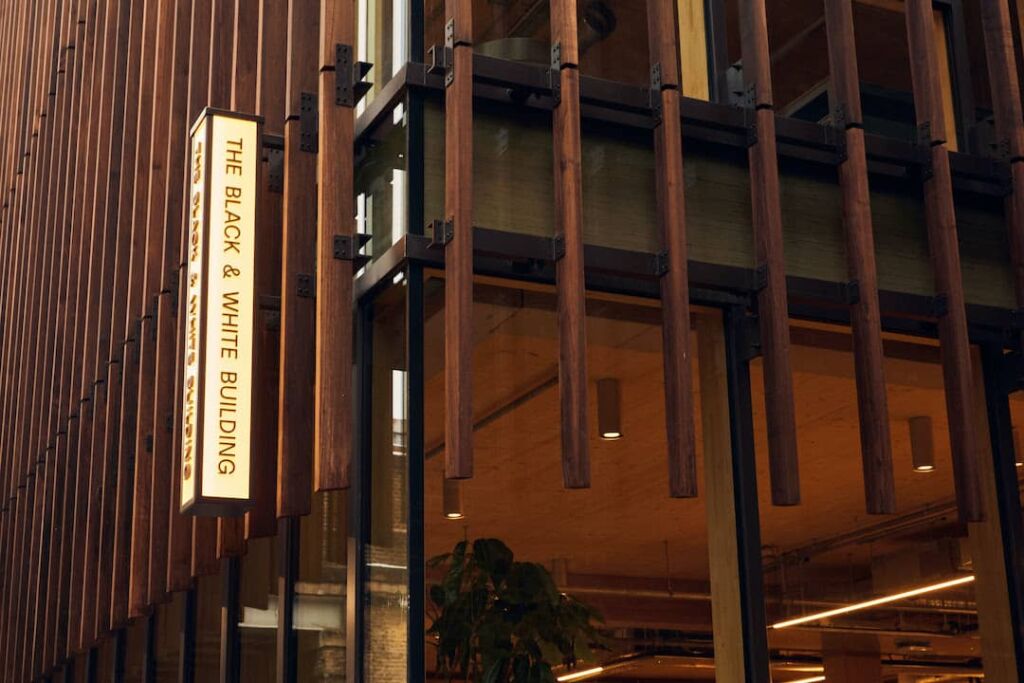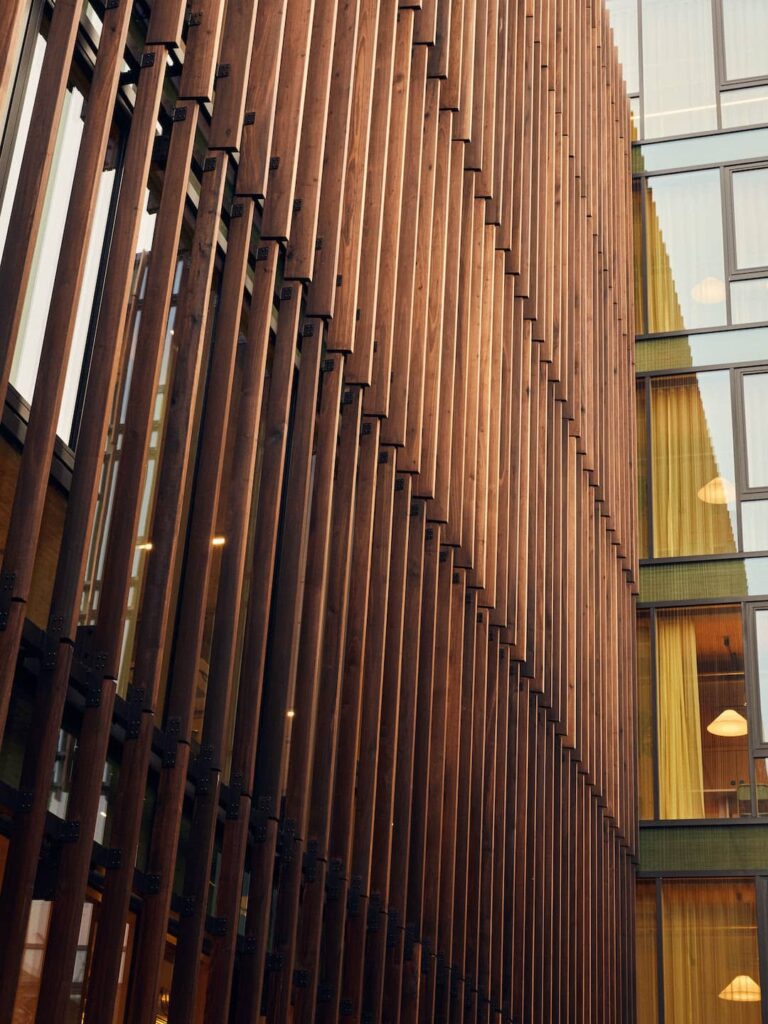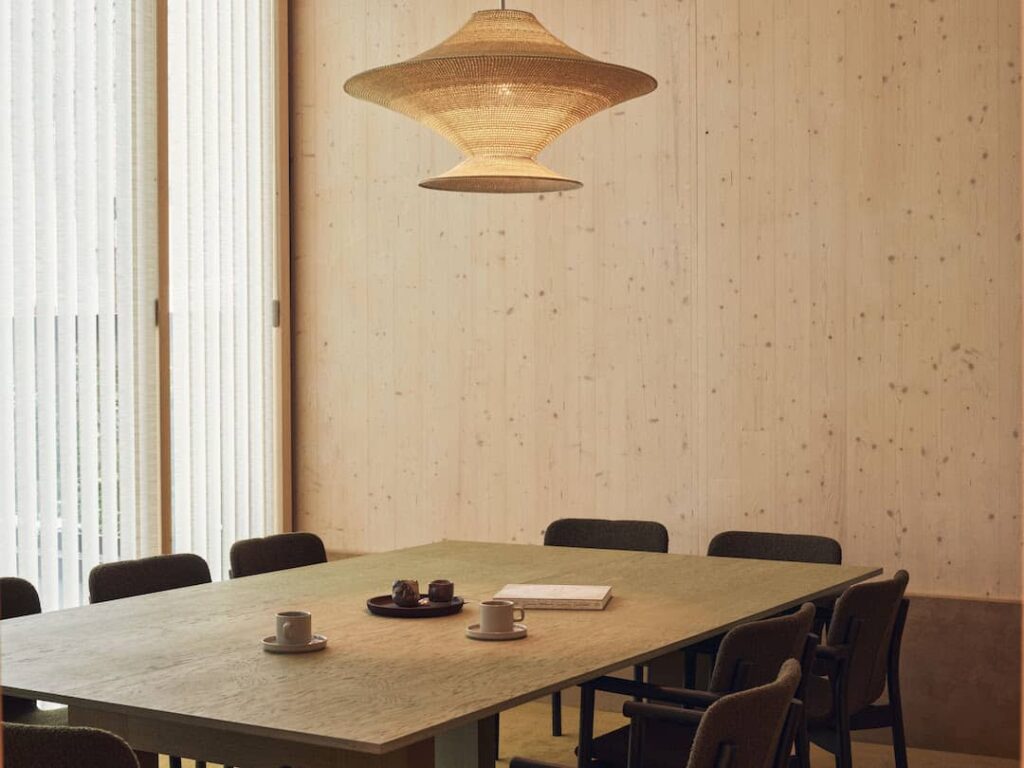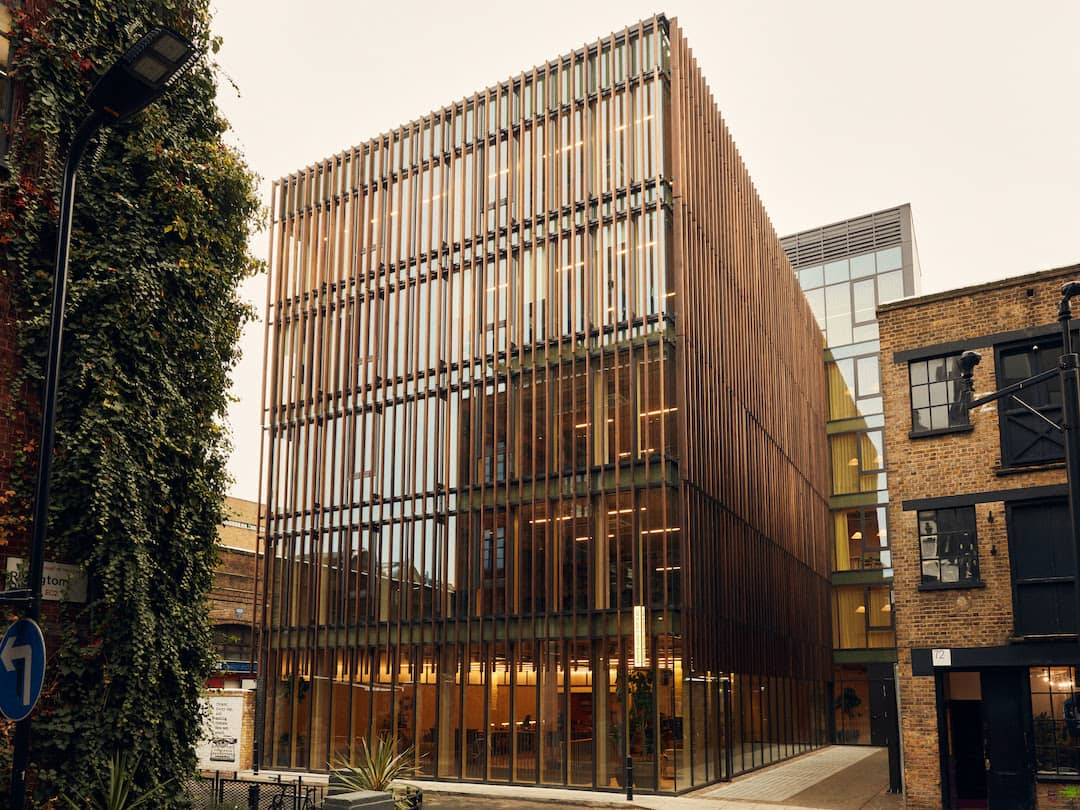“The Black & White Building”, an office building made entirely of wood, has just seen the light in the suburb of Shoreditch, London. From the collaboration between The Office Group (TOG), a company specializing in the design of workspaces, and the architectural firm Waugh thistleton a structure was born that perfectly combines nature with the corporate world.
The facility houses 94 bike storage spaces, 94 workstations, six meeting rooms, recreational facilities, showers, and even a bar and yoga center.

“Fast-Growing” Materials
The 17-metre (58 ft) tall London-based building was constructed using laminated veneer lumber (LVL) and cross-laminated timber (CLT). Both materials have been chosen for a significantly lower waste production than that of iron and steel.
In all, in The Black & White Building “there are” 1.547 pine and spruce trees, and 227 beech trees. All coming from certified forests in Austria and Germany.
The main feature of this London building, however, is another. It aroused my interest, and at the same time my doubts. According to TOG, the wood used can be completely regenerated in nature in just 137 minutes. It echoes Andrew Waugh, by the Waugh Thistleton architectural firm, which states:
This data clearly shows that wood can be a valid substitute for concrete and steel in construction, saving thousands of tons of CO2. We need to change the way we build, to transform the construction sector.

London: one forest, one building
I do not question the beauty and validity of wood as a building material. We have often talked about solutions of this kind. However, I wonder about the data and the proportions.
Given the fact that the number of trees felled and used for such a building is that of a small forest, what exactly does "materials regenerate in 137 minutes" mean?
I can understand that a first, tender sprout marks the beginning of rebirth two and a half hours after a new sowing, but it takes time for trees to regrow. I would be careful.



And then there are things that convince me
Having put aside (but not archived) the doubts, interesting things still remain in these London offices. For example, the fact that several components of the building were designed to be “interlocked” and not with fixings or glues of some kind.
This is an avenue that can be explored in the future: a form of eco-friendly design that could one day make possible the entire (and "painless" on an environmental level) dismantling of the structure rather than demolition.
Furthermore, the presence of 80 solar panels on the roof, which provide most of the internal electricity.
On an aesthetic level, nothing to say. This place is simply magnificent. The all-wood interiors (furniture, walls, floors: everything) have a crazy effect.
Will the price, in any sense, be fair?


